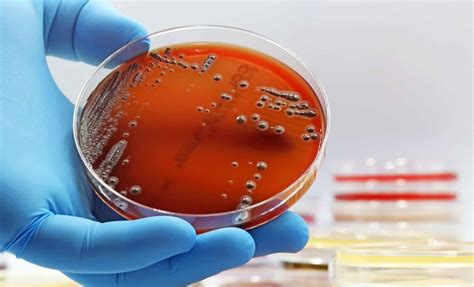
Repeated exposure to even low levels of harmful chemicals in food can pose significant health risks, scientists are warning, emphasizing that the “dose makes the poison” principle remains critical in assessing food safety. Concerns are mounting over the cumulative effects of toxins and contaminants found in everyday food items, prompting calls for more rigorous testing and regulation.
Mounting scientific evidence suggests that continuous exposure to even trace amounts of harmful chemicals in food can lead to serious health consequences. Researchers emphasize that the traditional toxicological principle of “the dose makes the poison” is particularly relevant, cautioning that regulatory bodies must consider the long-term, cumulative impact of these substances. The warning comes amid growing concerns about contaminants and toxins found in common food products, which could potentially elevate the risk of chronic diseases and other adverse health effects.
Cumulative Exposure: A Cause for Alarm
The central issue highlighted by scientists is the effect of cumulative exposure. While singular, high doses of toxins are readily identifiable and often addressed through immediate intervention, the insidious nature of low-level, repeated exposure poses a more significant challenge. These low doses, individually inconsequential, can collectively lead to toxic build-up in the body over time. This build-up can disrupt biological processes, compromise organ function, and ultimately lead to chronic diseases.
“The dose makes the poison” has long been a cornerstone of toxicology. It essentially states that any substance, even water or oxygen, can be toxic if consumed in sufficiently high quantities. Conversely, substances considered toxic can be harmless or even beneficial at extremely low doses. However, the challenge lies in determining the safe threshold for chronic, low-level exposure to various chemicals found in food.
The Landscape of Food Contaminants
The range of potential contaminants in food is broad, encompassing both naturally occurring toxins and those introduced through human activities. These include:
- Pesticides: Used extensively in agriculture to protect crops from pests, pesticides can leave residues on fruits, vegetables, and grains.
- Heavy Metals: Industrial processes and environmental pollution can contaminate soil and water, leading to the accumulation of heavy metals like lead, mercury, and arsenic in food crops and seafood.
- Mycotoxins: These toxic compounds are produced by fungi that can grow on crops such as corn, peanuts, and wheat, particularly in humid conditions.
- Industrial Chemicals: Chemicals like PFAS (per- and polyfluoroalkyl substances), used in various industrial applications, can contaminate water sources and subsequently enter the food chain.
- Food Additives: While many additives are considered safe, some have raised concerns due to potential allergic reactions or other adverse effects, particularly with long-term exposure.
- Microplastics: Plastic pollution has led to the pervasive presence of microplastics in the environment, including in food sources like seafood and even drinking water.
- Packaging Contaminants: Chemicals used in food packaging materials can migrate into the food, potentially exposing consumers to harmful substances.
Vulnerable Populations and Health Impacts
Certain populations are more vulnerable to the effects of cumulative exposure to food contaminants. These include:
- Infants and Children: Due to their smaller body size and developing organ systems, infants and children are more susceptible to the harmful effects of toxins.
- Pregnant Women: Exposure to certain chemicals during pregnancy can have detrimental effects on fetal development.
- Elderly Individuals: Age-related decline in organ function can make elderly individuals more vulnerable to the effects of toxins.
- Individuals with Pre-existing Conditions: Those with compromised immune systems or other health conditions may be more susceptible to the adverse effects of food contaminants.
The health impacts of chronic exposure to low levels of toxins can be diverse and far-reaching. These may include:
- Developmental Problems: Exposure to certain chemicals during pregnancy or early childhood can lead to developmental delays, learning disabilities, and other neurological problems.
- Cancer: Some contaminants, such as certain pesticides and heavy metals, are known carcinogens, increasing the risk of cancer development.
- Endocrine Disruption: Certain chemicals can interfere with the endocrine system, disrupting hormone balance and leading to reproductive problems, metabolic disorders, and other health issues.
- Immune Dysfunction: Exposure to toxins can weaken the immune system, making individuals more susceptible to infections and autoimmune diseases.
- Neurological Disorders: Some contaminants can damage the nervous system, leading to cognitive decline, tremors, and other neurological problems.
- Kidney and Liver Damage: The kidneys and liver are responsible for detoxifying the body, and chronic exposure to toxins can overload these organs, leading to damage and dysfunction.
Regulatory Gaps and the Need for Enhanced Testing
Scientists argue that current regulatory frameworks may not adequately address the risks associated with cumulative exposure to low levels of toxins. Many regulations focus on setting maximum allowable limits for individual contaminants in specific food products. However, they often fail to consider the combined effects of exposure to multiple contaminants from various sources over long periods.
There is a growing consensus among scientists and public health advocates that more comprehensive testing and monitoring are needed to assess the cumulative impact of food contaminants. This includes:
- Expanding the Scope of Testing: Testing should not be limited to a select few known contaminants but should encompass a broader range of potential toxins.
- Implementing More Sensitive Testing Methods: More sensitive analytical methods are needed to detect and quantify trace amounts of contaminants in food.
- Conducting Long-Term Studies: Long-term studies are essential to assess the cumulative effects of exposure to low levels of toxins over time.
- Developing Risk Assessment Models: Sophisticated risk assessment models are needed to predict the potential health impacts of exposure to multiple contaminants.
- Promoting Transparency and Public Awareness: Consumers need access to information about potential food contaminants and the steps they can take to minimize their exposure.
The Role of Individual Choices and Dietary Diversity
While regulatory action is crucial, individuals can also take steps to minimize their exposure to food contaminants. This includes:
- Choosing Organic Foods: Organic farming practices prohibit the use of synthetic pesticides and fertilizers, reducing the risk of pesticide exposure.
- Washing Fruits and Vegetables Thoroughly: Washing produce can help remove surface residues of pesticides and other contaminants.
- Peeling Fruits and Vegetables: Peeling can remove contaminants that may have accumulated on the outer surface.
- Eating a Diverse Diet: Consuming a wide variety of foods from different sources can help reduce exposure to any single contaminant.
- Limiting Processed Foods: Processed foods often contain additives and may be more likely to be contaminated with industrial chemicals.
- Being Mindful of Seafood Consumption: Certain types of seafood may contain high levels of mercury or other contaminants.
- Using Water Filters: Water filters can remove contaminants from drinking water, which can be a significant source of exposure.
- Advocating for Stronger Regulations: Consumers can advocate for stronger regulations and policies to protect food safety.
The Scientific Community’s Stance
Many scientists and toxicologists are increasingly vocal about the need for a paradigm shift in how we assess and regulate food safety. They argue that a more holistic approach is needed, one that considers the cumulative effects of exposure to multiple contaminants and the vulnerability of specific populations.
Dr. [Hypothetical Expert Name], a leading toxicologist, stated, “We can no longer afford to focus solely on individual contaminants in isolation. We must consider the cumulative impact of exposure to multiple chemicals over a lifetime. The ‘dose makes the poison’ principle remains valid, but we need to refine our understanding of what constitutes a ‘dose’ in the context of chronic, low-level exposure.”
Global Implications and International Cooperation
The issue of food contamination is not limited to any one country or region. It is a global challenge that requires international cooperation. Food products are often traded across borders, and contaminants can spread rapidly through the global food supply.
International organizations like the World Health Organization (WHO) and the Food and Agriculture Organization (FAO) play a crucial role in setting standards for food safety and promoting international cooperation. However, more needs to be done to harmonize regulations and ensure that all countries have the resources and expertise to effectively monitor and control food contaminants.
The Future of Food Safety
Addressing the challenges posed by cumulative exposure to food contaminants will require a multi-faceted approach involving scientists, regulators, food producers, and consumers. This includes:
- Investing in Research: More research is needed to better understand the cumulative effects of exposure to multiple contaminants and to develop more effective methods for assessing and mitigating risks.
- Strengthening Regulations: Regulatory frameworks need to be updated to address the challenges of cumulative exposure and to ensure that food is safe for all consumers.
- Promoting Sustainable Agriculture: Sustainable farming practices can reduce the use of pesticides and other harmful chemicals, minimizing the risk of food contamination.
- Empowering Consumers: Consumers need access to information and tools to make informed choices about their food and to protect themselves from exposure to contaminants.
- Fostering Collaboration: Collaboration among scientists, regulators, food producers, and consumers is essential to address the complex challenges of food safety.
The warning from scientists serves as a crucial reminder that vigilance and proactive measures are necessary to safeguard public health. As our understanding of the complex interactions between food contaminants and human health evolves, so too must our approach to food safety regulation and personal responsibility.
The Specific Case of PFAS
Per- and polyfluoroalkyl substances (PFAS) represent a particularly concerning class of contaminants. These synthetic chemicals, used in a wide array of industrial and consumer products, are exceptionally persistent in the environment and can accumulate in the human body. PFAS contamination has been detected in water sources, soil, and various food products, raising significant health concerns.
Studies have linked PFAS exposure to a range of adverse health effects, including:
- Increased cholesterol levels
- Immune system dysfunction
- Liver enzyme abnormalities
- Thyroid disorders
- Kidney and testicular cancer
The widespread presence of PFAS in the environment and its potential health impacts have prompted regulatory action in some countries and regions. However, more comprehensive measures are needed to address this pervasive contaminant.
Addressing Mycotoxins in Food
Mycotoxins, toxic substances produced by molds that can grow on crops, pose a significant threat to food safety, particularly in regions with warm and humid climates. Aflatoxins, a type of mycotoxin produced by Aspergillus fungi, are among the most potent carcinogens known and are often found in crops like corn, peanuts, and tree nuts.
Exposure to mycotoxins can lead to a range of health problems, including:
- Liver damage
- Immune suppression
- Increased risk of liver cancer
- Stunted growth in children
To minimize the risk of mycotoxin contamination, it’s crucial to:
- Implement good agricultural practices
- Properly store crops to prevent mold growth
- Test food products for mycotoxins
- Consume a diverse diet to reduce exposure to any single source of mycotoxins
The Importance of Rigorous Pesticide Regulation
Pesticides are widely used in agriculture to protect crops from pests and diseases, but pesticide residues on food can pose a risk to human health. While regulations aim to limit pesticide residues to safe levels, concerns remain about the cumulative effects of exposure to multiple pesticides and the potential for endocrine disruption.
To mitigate pesticide exposure, consumers can:
- Choose organic produce whenever possible
- Wash fruits and vegetables thoroughly before consumption
- Peel fruits and vegetables to remove surface residues
- Advocate for stricter pesticide regulations and monitoring
Addressing Heavy Metal Contamination
Heavy metals like lead, mercury, arsenic, and cadmium can contaminate food through various sources, including industrial pollution, mining activities, and contaminated soil. These heavy metals can accumulate in the body and lead to a range of adverse health effects, including:
- Neurological damage
- Kidney damage
- Developmental problems
- Cancer
To minimize heavy metal exposure, it’s important to:
- Be mindful of seafood consumption, as certain types of fish may contain high levels of mercury
- Avoid consuming food grown in contaminated soil
- Use water filters to remove heavy metals from drinking water
- Support efforts to reduce industrial pollution and remediate contaminated sites
The Impact of Microplastics on Food Safety
The growing problem of plastic pollution has led to the presence of microplastics in the environment, including in food sources like seafood, drinking water, and even agricultural soil. While the full extent of the health risks associated with microplastic exposure is still being investigated, concerns have been raised about potential:
- Physical damage to tissues
- Inflammatory responses
- Exposure to toxic chemicals that leach from plastics
To reduce microplastic exposure, consumers can:
- Reduce their use of single-use plastics
- Choose products with minimal plastic packaging
- Support efforts to reduce plastic pollution and improve waste management
The Role of Food Processing and Packaging
Food processing and packaging can introduce contaminants into food. For example, chemicals used in food packaging materials can migrate into the food, exposing consumers to potentially harmful substances. Processed foods may also contain additives that raise health concerns.
To minimize exposure to contaminants from food processing and packaging, consumers can:
- Choose fresh, whole foods over processed foods whenever possible
- Look for packaging made from safer materials
- Be aware of the potential risks associated with food additives
- Support efforts to develop safer food processing and packaging technologies
Frequently Asked Questions (FAQ)
1. What exactly does “the dose makes the poison” mean in the context of food contaminants?
The principle “the dose makes the poison,” originally attributed to Paracelsus, signifies that any substance can be harmful at high enough concentrations, while even toxic substances can be safe or beneficial in minuscule amounts. In the context of food contaminants, it means the amount of a contaminant you are exposed to matters significantly. Low levels of exposure over long periods, even if individually considered harmless, can accumulate and pose health risks. It’s not just about the presence of a contaminant, but the concentration and duration of exposure that determines the potential harm.
2. What are the most common types of food contaminants that people should be concerned about?
Several types of food contaminants are of concern:
- Pesticides: Residues from agricultural practices.
- Heavy Metals: Such as lead, mercury, arsenic, found in soil and water.
- Mycotoxins: Toxins produced by molds on crops.
- Industrial Chemicals: Like PFAS, used in manufacturing and found in water and soil.
- Food Additives: Certain preservatives, colorings, and flavor enhancers.
- Microplastics: Plastic particles contaminating the environment and food chain.
- Packaging Contaminants: Chemicals migrating from food packaging into food.
Each of these can have varying health impacts depending on the level and duration of exposure.
3. How can I minimize my exposure to harmful chemicals and toxins in food?
You can take several steps to reduce exposure:
- Choose Organic Foods: To reduce pesticide exposure.
- Wash Produce Thoroughly: To remove surface contaminants.
- Eat a Diverse Diet: To avoid overexposure to any single contaminant.
- Limit Processed Foods: Which often contain additives and packaging contaminants.
- Be Mindful of Seafood Consumption: Due to potential mercury levels.
- Use Water Filters: To remove contaminants from drinking water.
- Support Sustainable Agriculture: To reduce overall chemical usage.
- Cook food properly: some toxins can be reduced during the cooking process.
4. Are there specific regulations in place to protect consumers from food contaminants, and are they sufficient?
Yes, there are regulations, but their sufficiency is debated. Agencies like the FDA (in the US) and EFSA (in Europe) set maximum allowable limits for contaminants in food. However, critics argue that these regulations often:
- Focus on individual contaminants: Ignoring cumulative effects.
- Lack long-term study data: On low-level, chronic exposure.
- Do not adequately protect vulnerable populations: Like children and pregnant women.
There’s a push for more comprehensive testing, stricter standards, and greater transparency.
5. What are the potential long-term health effects of chronic exposure to low levels of food contaminants?
Chronic exposure to low levels of food contaminants can lead to various long-term health issues:
- Developmental Problems: Affecting neurological and cognitive functions.
- Increased Cancer Risk: From carcinogens like certain pesticides and heavy metals.
- Endocrine Disruption: Leading to reproductive and metabolic disorders.
- Immune Dysfunction: Weakening the body’s defense against infections.
- Neurological Disorders: Including cognitive decline and tremors.
- Kidney and Liver Damage: From the constant detoxification burden.
- Allergies and Sensitivities: Increased likelihood of developing sensitivities to certain foods or substances.
- Respiratory Issues: Some contaminants can exacerbate or trigger respiratory problems, such as asthma.
- Cardiovascular Problems: Certain contaminants have been linked to increased risk of heart disease.
- Autoimmune Diseases: Some toxins can trigger or worsen autoimmune conditions.
- Reduced Fertility: Exposure to certain chemicals can impair reproductive function in both men and women.
- Weight Gain and Metabolic Syndrome: Certain contaminants can interfere with metabolic processes and contribute to weight gain and the development of metabolic syndrome.
- Mental Health Issues: Emerging research suggests a link between exposure to certain toxins and increased risk of anxiety, depression, and other mental health disorders.
- Compromised Gut Health: Some contaminants can disrupt the balance of the gut microbiome, leading to digestive problems and other health issues.
- Bone Weakening: Certain toxins can interfere with calcium absorption and bone density, increasing the risk of osteoporosis.
- Skin Problems: Exposure to certain contaminants can trigger skin irritation, rashes, and other dermatological issues.
- Vision Problems: Some toxins can damage the eyes and lead to vision impairment.
These effects underscore the importance of minimizing exposure and supporting stricter food safety regulations.









